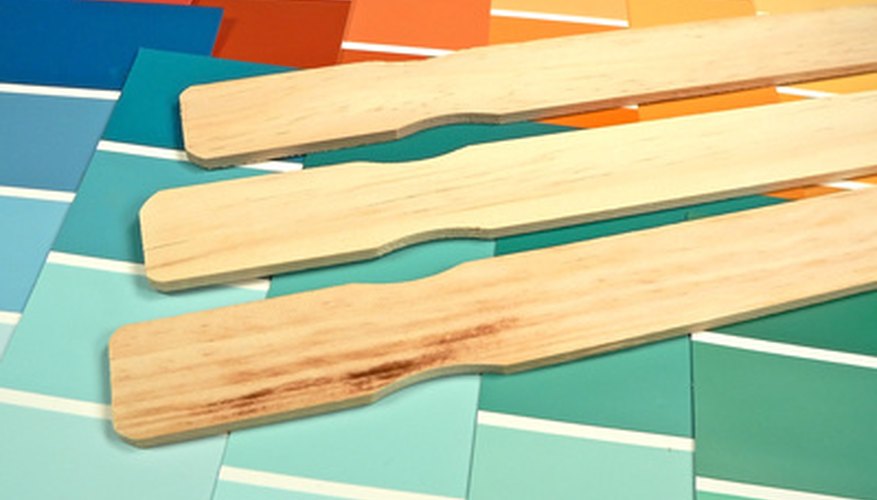You had plans to paint your entire living room, but opened up the paint to find out you accidentally purchased exterior paint. There's no use wasting it, so why not use the paint after all? Or maybe the paint contractor you hired strongly recommends using an exterior paint indoors because he says that it covers better than interior paint. Either way, don't do it! The debate over whether or not to use exterior paint indoors continues. Although it may seem like a good idea, don't try it until you have read the pros and cons about using exterior paint indoors.
Why Exterior Paint is Durable
Exterior and interior paints are formulated differently. Exterior paints are created to battle harsh outdoor elements, and they are made with stronger ingredients than interior paint formulations. True, outdoor paint is durable, is made to resist fading, holds colour longer and resists tannin bleed (tannin is a natural extractive of dark wood used for house siding), but the ingredients that make the paint long-lasting can wreak havoc indoors.
Warnings about Using Exterior Paint Indoors
According to expert handyman Bob Vila's website, exterior paints have mildecides to fend off mould and mildew. Used indoors, these ingredients can cause respiratory problems. Even the Environmental Protection Agency warns that until recently, many paints, both exterior and interior versions, used mercury as a fungicide, so be sure to check the label on older paints.
- According to expert handyman Bob Vila's website, exterior paints have mildecides to fend off mould and mildew.
In addition, exterior paints have more acrylic in the mix than interior paint, and that can cause excessive odours. Vila's website also states that exterior paint is formulated to handle inevitable expansion and contraction in all types of temperatures and weather. That is overkill for indoor use. If the paint moves as it would outdoors, the wall paint may buckle or wrinkle.
Expert Insight
Even professionals make mistakes. Mark Dixon, author of House Painting Inside and Out, admits to having used exterior paint on an indoor ceiling because he thought it would last longer. He found out, however, that the exterior paint discoloured indoors.
When to Use Exterior Paint Indoors
Limited exceptions break the rule of not using exterior paint indoors. According to Sacha Cohen, author of Decorator's Problem Solver, textured masonry paint is acceptable to use indoors as a substitute for latex interior paint as a way to hide small defects in walls and ceilings. Masonry paint is widely available but only in limited colours. Indoor/outdoor paint by Krylon is also an option, but it is a spray paint for use on projects, not entire walls.
- Limited exceptions break the rule of not using exterior paint indoors.
- Indoor/outdoor paint by Krylon is also an option, but it is a spray paint for use on projects, not entire walls.
Using Up Exterior Paint
Countless comments, both from professional painters and homeowners, on painting blogs and websites urge homeowners to use exterior paints indoors. If you have an opened can of exterior paint, you may be tempted by all of the misleading advice. But you don't have to waste the paint. First, try taking it back to the retailer. Some stores do and display them on an "oops" table and sell them at a discount. Another option is to use the open can of paint to freshen up some worn outdoor accessories. Why not take the opportunity to build or buy some unfinished planters, chairs, benches or tables and brighten up the yard with your "oops" can of paint?
- Countless comments, both from professional painters and homeowners, on painting blogs and websites urge homeowners to use exterior paints indoors.
- Another option is to use the open can of paint to freshen up some worn outdoor accessories.
